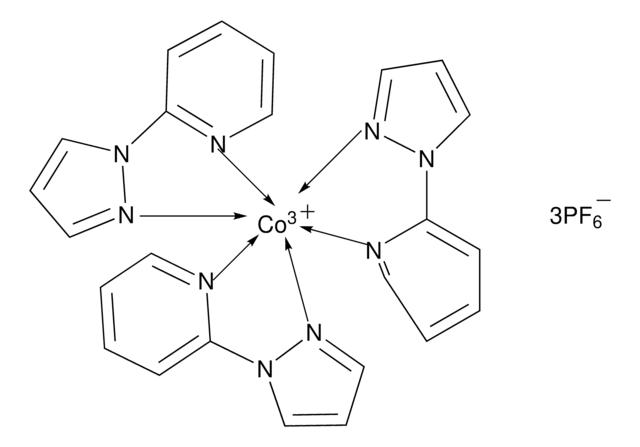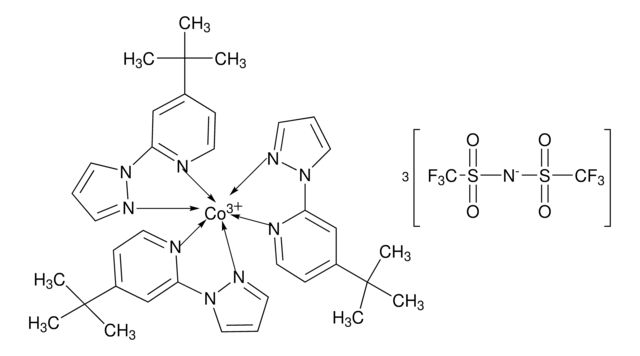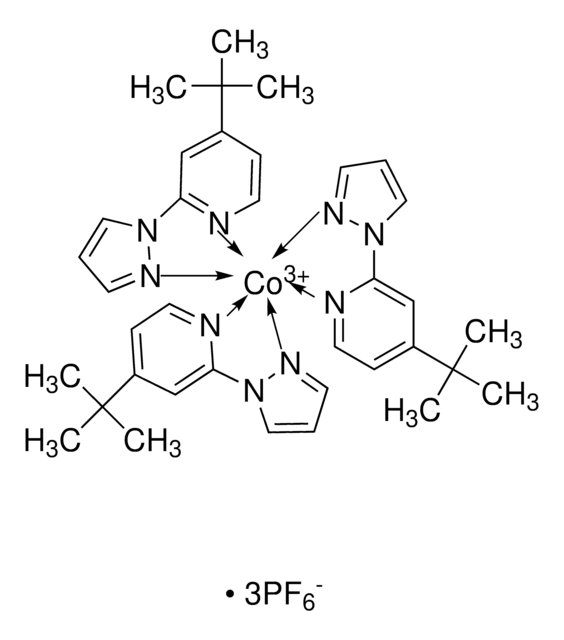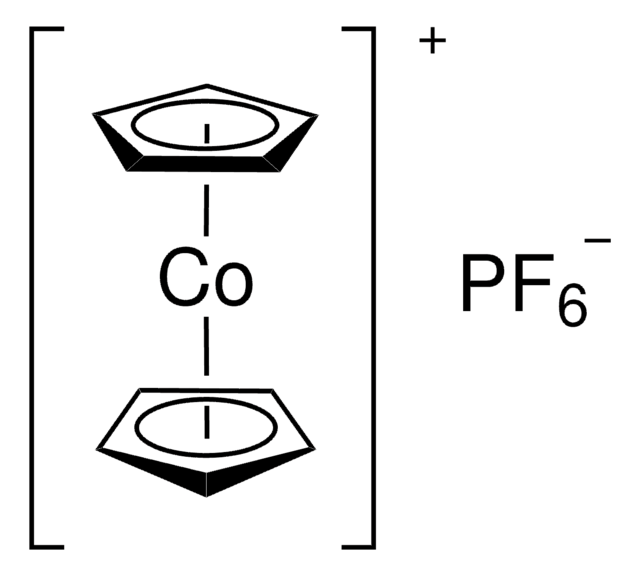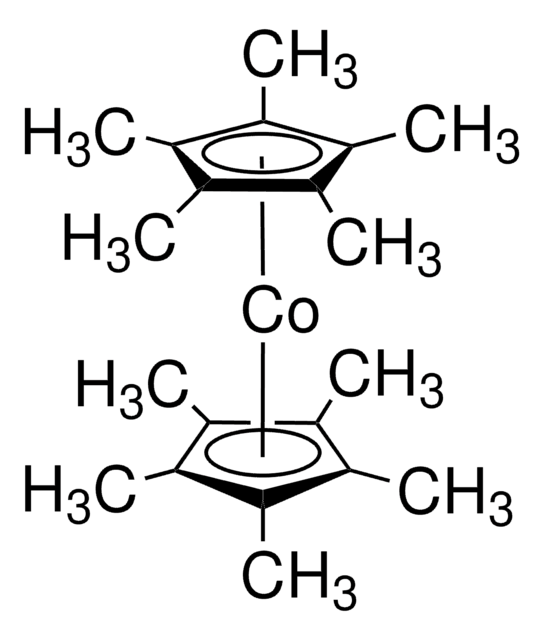Wichtige Dokumente
805238
FK 102 Co(II) PF6 salt
Synonym(e):
Greatcell Solar®, tris(2-(1H-pyrazol-1-yl)pyridine)cobalt(II) di[hexafluorophosphate]
About This Item
Empfohlene Produkte
Assay
98%
Qualitätsniveau
Form
powder
mp (Schmelzpunkt)
362 °C
SMILES String
F[P-](F)(F)(F)(F)F.F[P-](F)(F)(F)(F)F.N1(C2=NC=CC=C2)N=CC=C1.C3(N4C=CC=N4)=CC=CC=N3.C5(N6C=CC=N6)=CC=CC=N5.[Co+2]
InChI
1S/3C8H7N3.Co.2F6P/c3*1-2-5-9-8(4-1)11-7-3-6-10-11;;2*1-7(2,3,4,5)6/h3*1-7H;;;/q;;;+2;2*-1
InChIKey
MLELXRWOHQBFBO-UHFFFAOYSA-N
Verwandte Kategorien
Anwendung
FK102 cobalt complexes offer guaranteed performance, high reproducibility, consistent results, and are of highest purity. In comparison to triiodide-based redox electrolytes, cobalt complexes in general increase photovoltages and particularly at lower light levels (e.g. for indoor applications), significantly increase device power output.
Recommended use:
In liquid-based electrolytes: typically 0.15-0.2M of Co(II) and ca. 0.05M Co(II)
In solid-state photovoltaic cells: up to 10 weight % added to the hole transport material system.
Rechtliche Hinweise
Greatcell Solar is a registered trademark of Greatcell SolarMaterials Pty Ltd.
Signalwort
Warning
H-Sätze
Gefahreneinstufungen
Eye Irrit. 2 - Skin Irrit. 2 - Skin Sens. 1 - STOT SE 3
Zielorgane
Respiratory system
Lagerklassenschlüssel
11 - Combustible Solids
WGK
WGK 3
Flammpunkt (°F)
Not applicable
Flammpunkt (°C)
Not applicable
Hier finden Sie alle aktuellen Versionen:
Analysenzertifikate (COA)
Die passende Version wird nicht angezeigt?
Wenn Sie eine bestimmte Version benötigen, können Sie anhand der Lot- oder Chargennummer nach einem spezifischen Zertifikat suchen.
Besitzen Sie dieses Produkt bereits?
In der Dokumentenbibliothek finden Sie die Dokumentation zu den Produkten, die Sie kürzlich erworben haben.
Artikel
Dye-sensitized solar cells (DSCs) are 3rd generation solar cells combining the promise of high efficiency with low production costs.
Next generation solar cells have the potential to achieve conversion efficiencies beyond the Shockley-Queisser (S-Q) limit while also significantly lowering production costs.
Dr. Perini and Professor Correa-Baena discuss the latest research and effort to obtain higher performance and stability of perovskite materials.
For several decades, the need for an environmentally sustainable and commercially viable source of energy has driven extensive research aimed at achieving high efficiency power generation systems that can be manufactured at low cost.
Global Trade Item Number
| SKU | GTIN |
|---|---|
| 805238-5G | 4061832979922 |
Unser Team von Wissenschaftlern verfügt über Erfahrung in allen Forschungsbereichen einschließlich Life Science, Materialwissenschaften, chemischer Synthese, Chromatographie, Analytik und vielen mehr..
Setzen Sie sich mit dem technischen Dienst in Verbindung.